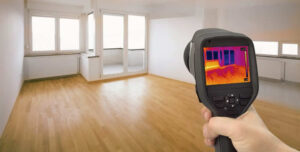What're your beliefs about Leaking water lines?

Early discovery of dripping water lines can minimize a potential disaster. Some small water leakages might not be noticeable.
1. Check Out the Water Meter
Every residence has a water meter. Examining it is a proven way that helps you discover leaks. For starters, turn off all the water sources. Make certain no person will certainly purge, make use of the tap, shower, run the cleaning equipment or dishwasher. From there, most likely to the meter and also watch if it will certainly transform. Since no person is utilizing it, there need to be no activities. That indicates a fast-moving leak if it moves. Likewise, if you spot no changes, wait an hour or 2 and also examine back once more. This implies you might have a slow leak that can even be underground.
2. Inspect Water Consumption
Examine your water expenses and track your water usage. As the one paying it, you ought to see if there are any discrepancies. If you detect sudden changes, despite your consumption coinciding, it means that you have leakages in your plumbing system. Keep in mind, your water expense must drop under the same range every month. An unexpected spike in your costs indicates a fast-moving leakage.
On the other hand, a stable boost every month, despite having the exact same habits, reveals you have a slow leak that's likewise gradually escalating. Call a plumber to extensively inspect your residential or commercial property, especially if you really feel a warm area on your flooring with piping underneath.
3. Do a Food Coloring Test
When it comes to water usage, 30% comes from commodes. If the shade in some way infiltrates your bowl throughout that time without flushing, there's a leakage between the storage tank and dish.
4. Asses Exterior Lines
Do not neglect to check your outdoor water lines as well. Must water permeate out of the link, you have a loosened rubber gasket. One little leakage can lose lots of water as well as surge your water expense.
5. Check and also Analyze the Scenario
Homeowners should make it a behavior to examine under the sink counters and also also inside cupboards for any bad odor or mold development. These 2 red flags show a leakage so prompt focus is called for. Doing routine assessments, even bi-annually, can conserve you from a major problem.
Check for stainings and weakening as many pipes and devices have a life expectancy. If you believe leaking water lines in your plumbing system, do not wait for it to rise.
Early discovery of dripping water lines can alleviate a potential calamity. Some small water leaks might not be noticeable. Examining it is a surefire means that assists you discover leakages. One little leak can waste heaps of water and also surge your water costs.
If you suspect dripping water lines in your plumbing system, don't wait for it to escalate.
WARNING SIGNS OF WATER LEAKAGE BEHIND THE WALL
PERSISTENT MUSTY ODORS
As water slowly drips from a leaky pipe inside the wall, flooring and sheetrock stay damp and develop an odor similar to wet cardboard. It generates a musty smell that can help you find hidden leaks.
MOLD IN UNUSUAL AREAS
Mold usually grows in wet areas like kitchens, baths and laundry rooms. If you spot the stuff on walls or baseboards in other rooms of the house, it’s a good indicator of undetected water leaks.
STAINS THAT GROW
When mold thrives around a leaky pipe, it sometimes takes hold on the inside surface of the affected wall. A growing stain on otherwise clean sheetrock is often your sign of a hidden plumbing problem.
PEELING OR BUBBLING WALLPAPER / PAINT
This clue is easy to miss in rooms that don’t get much use. When you see wallpaper separating along seams or paint bubbling or flaking off the wall, blame sheetrock that stays wet because of an undetected leak.
BUCKLED CEILINGS AND STAINED FLOORS
If ceilings or floors in bathrooms, kitchens or laundry areas develop structural problems, don’t rule out constant damp inside the walls. Wet sheetrock can affect adjacent framing, flooring and ceilings.
https://www.servicemasterbyzaba.com/blog/how-to-detect-water-leakage-in-walls/

As a reader on Finding hidden leaks, I assumed sharing that article post was important. Feel free to take the opportunity to promote this blog if you enjoyed it. Thanks for going through it.